For May 2022's "May Madness" feature I'm just playing a bunch of Sega Mega Drive / Genesis RPGs that caught my eye after researching for the Mega Archive blog series. You can see how well I'm doing by visiting the first entry, here.
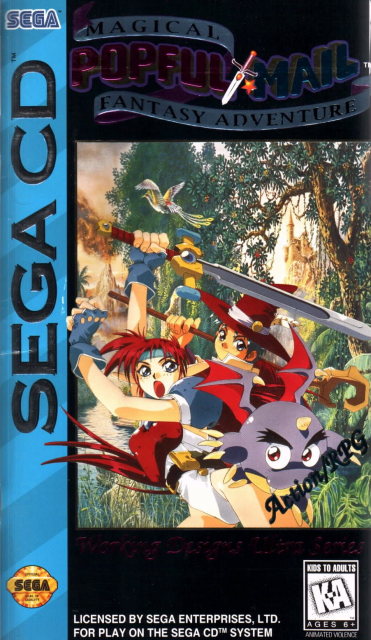
Returning to our original theme of Sega Mega Drive RPGs that probably aren't RPGs, we're taking a lateral move to the system's CD peripheral, the Sega CD, to check out a game that's been on my mind for quite a few years: Nihon Falcom's Popful Mail. As many might know, I became a dyed-in-the-wool Falcom fanboy around the time the Ys games were coming to Steam (I'd already played Ys VI and Ys Seven on PS2 and PSP, respectively) and I'd discovered the Trails in the Sky franchise, both happening around the very early 2010s. Since falling in love with their output, I've been using my various blogging features to justify sneaking in a quick Falcom playthrough: my SNES Classic Mk. II series, for instance, gave me an opportunity to finally try out Ys black sheep Ys V: Lost Kefin, Kingdom of Sand. I'm pulling the same trick again here to find out what the deal is with their lighthearted action-RPG Popful Mail.
Popful Mail was first released on Japanese home computers in 1991 and later made available on the Super Famicom, Sega CD, and TurboGrafx-CD. At the time, Falcom usually only developed for Japan's PC market that included the likes of the MSX, PC88/98, Sharp X1/68k and FM Towns. What would tend to happen is that their RPGs, often breezier real-time fare, would get popular enough to attract console ports which Falcom would let other, trusted developers convert. That's what happened with Faxanadu for NES, which saw Hudson basically remake Xanadu: Dragon Slayer II from scratch, and the multiple versions of Ys IV, which didn't actually have an "original" Falcom version until many, many years later with Memories of Celceta. Popful Mail and its charms - simple and accessible platforming and action-RPG gameplay with a comedic script - saw multiple adaptations, the most well-known of which to us westerners being the Sega CD version as it was also the only one to see a localization. In it, the titular heroine "Popful" Mail (so-named for her bubbly personality, though I think it's one of those Lovely Angels/Dirty Pair situations where only she thinks she's cute and vivacious and everyone else sees her as abrasive and money-grubbing) is seeking to cash in a sizeable bounty on local villains Nuts Cracker and Muttonhead. Her pursuit of these two villains eventually has her discovering a plot to resurrect an ancient Overlord, with her joining Muttonhead's former apprentice Tatto and the friendly bat-like monster Gaw in preventing this world-ending catastrophe.
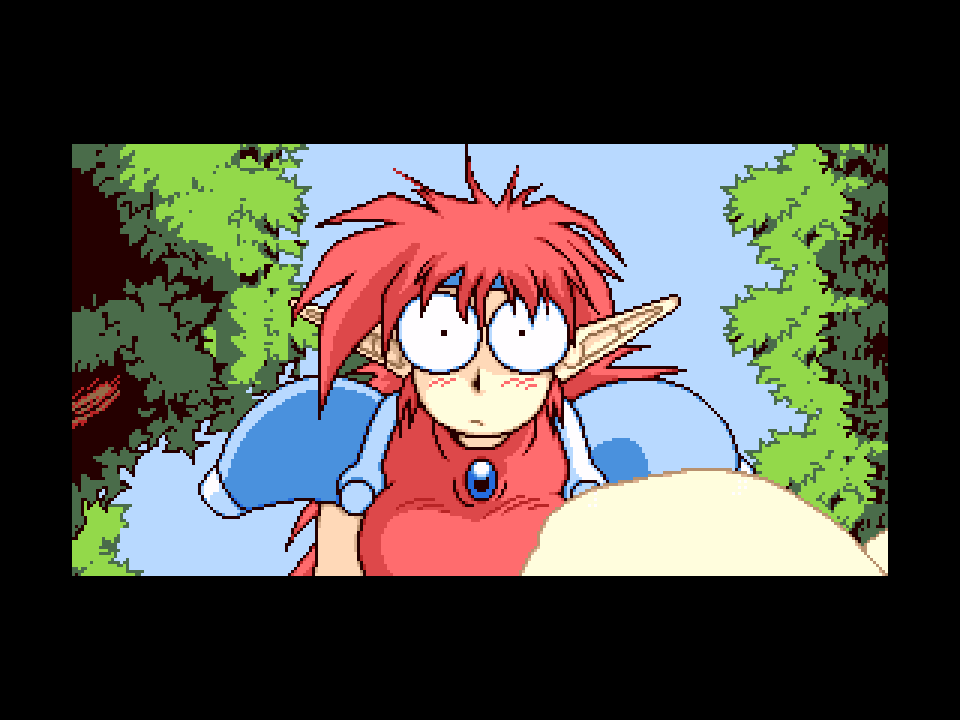
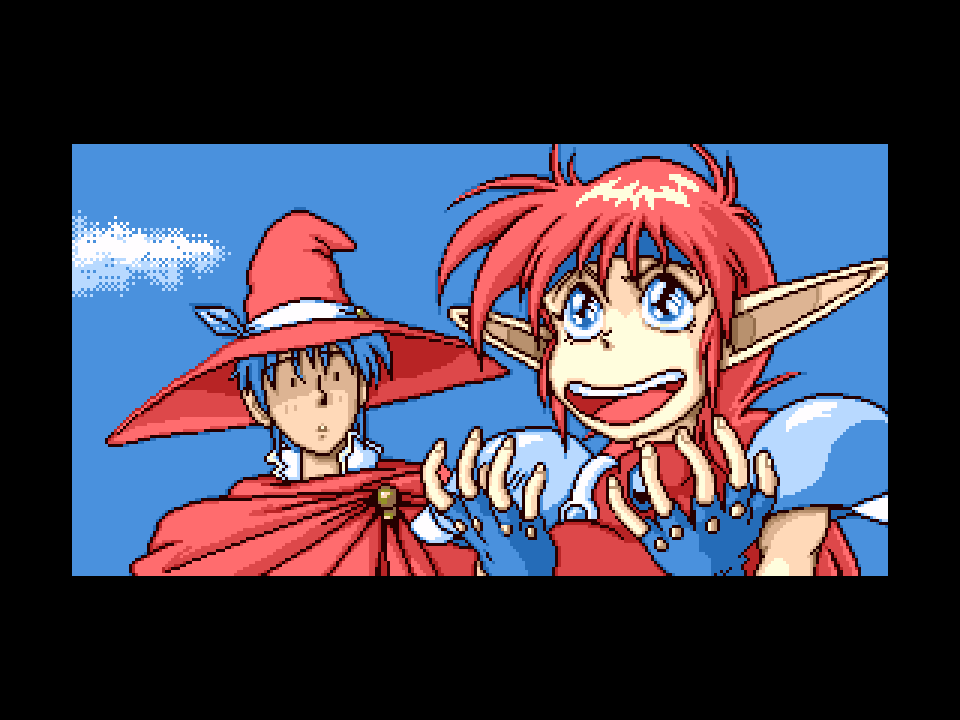
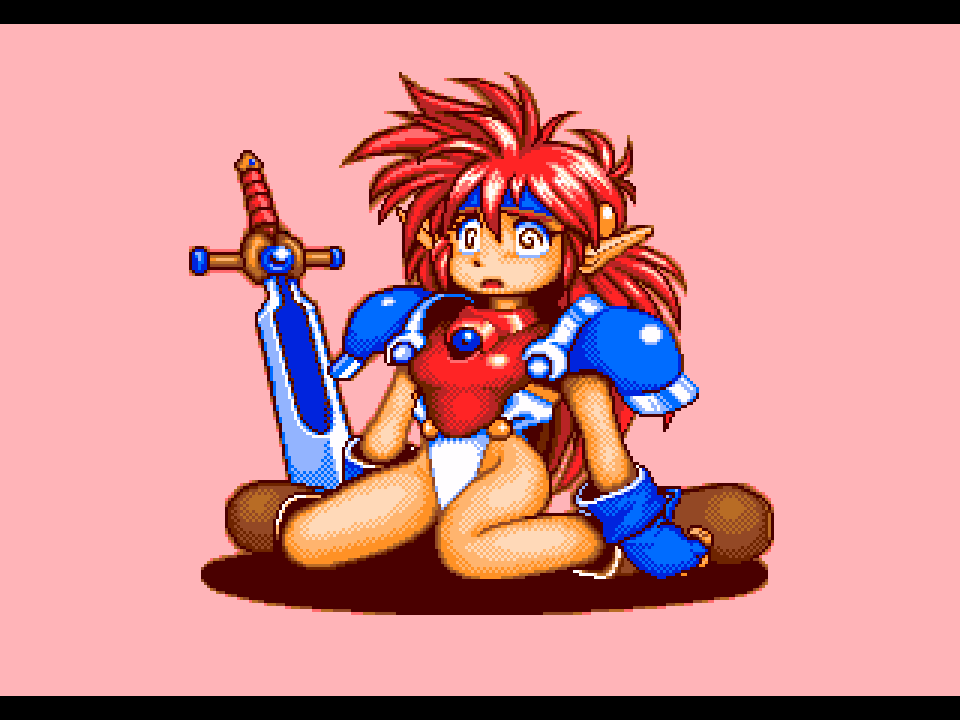
The gameplay is not wholly dissimilar to Ys III: Wanderers of Ys, particularly with its side-scrolling view and a focus on challenging boss fights. Likewise, it's somewhat in the same vein as Westone/Sega's own Wonder Boy franchise, as the protagonist doesn't so much increase in power through normal levelling up but spends the money earned from killing enemies and opening chests to buy ever better gear. Money can also be put towards buying fruit, the game's chief method of healing and a useful commodity throughout. Many of the game mechanics are deliberately simplified for a wider audience: for instance, your character always has 100 health (and so do most enemies) - what equipment upgrades do instead is reduce the percentage of it that is lost with every hit. Initially, you just control Mail herself, but you eventually recruit both Tatto and Gaw as you keep playing: each has different strengths, and tend to work best against specific bosses and level design. For example, Mail is fast on her feet and doesn't need to wait for the mana bar to recharge to attack with her sword; all of Tatto's magic is ranged and can be effective at hitting enemies in weird spots, like above his head, though he has less defense overall; and Gaw's breath attack can be devastating up close and he also has a higher jump owing to his wings, which might mean reaching platforms and treasure chests the others can't, but moves a lot slower and has trouble evading attacks. Each has a separate health gauge too, and switching between them consecutively while fighting bosses and exploring feels like a precursor to the party system introduced in recent Ys games, starting with Ys Seven. Most stages have you moving around circuitous paths taking on platforming challenges and fighting enemies along the way, often featuring boss fights and/or settlements of friendly NPC vendors from whom you can restore your health and buy new items. The game's economy is a factor throughout, as new gear tends to get prohibitively expensive unless you're regularly defeating every enemy you come across and excess cash can be put towards vital curatives.
I later read post-playthrough that the localization, performed by the semi-notorious Working Designs, not only injected a lot of early '90s reference humor into the script - which both instantly dates the game and also makes it oddly nostalgic - but modified the enemy and player stats to produce a playthrough that was far more difficult than it was first intended to be. I can attest to that, because it feels like I died well over a hundred times. The difficulty is ameliorated somewhat by an ability to save anywhere - in practice, it just dumps you at the entrance of the last area transition - and an effectively endless capacity for healing items, should you be able to afford them. However, most enemies - not just bosses, but the jobbers patrolling around the stages - tend to take you down in three or four hits even with the best armor available at that part of the game. Bosses also tend to be damage sponges, only taking 3-5% damage from most attacks. Some are clearly meant to be chaotic "battle of attrition" style encounters, where you can't help but get hit while exploiting attacking opportunities in turn, but you simply don't have the health or resources to tank their blows. The difficulty is wildly inconsistent as a result, with bosses that were meant to be relative pushovers becoming roadblocks while the trickier, "there's a strategy to suss out" bosses being far easier once you've figured them out. One issue with surviving enemy attacks is that they're all extraordinarily quick and the game's larger sprites means having less time to react: it takes a few attempts to know what to anticipate and when to start pre-emptively jumping or defending (done by holding down to duck) incoming strikes.
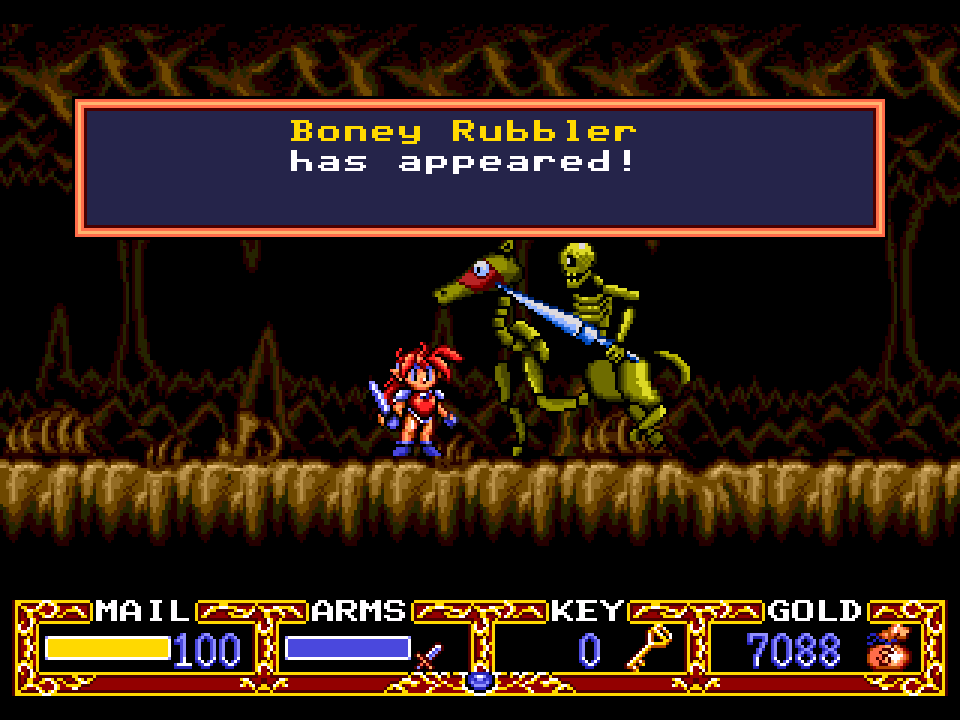
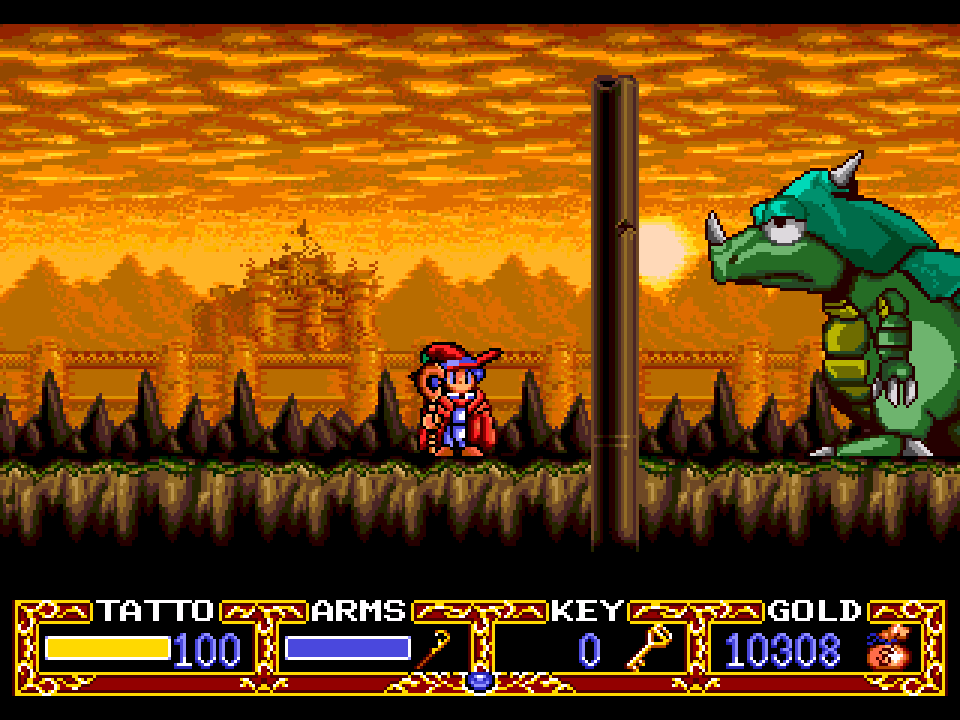
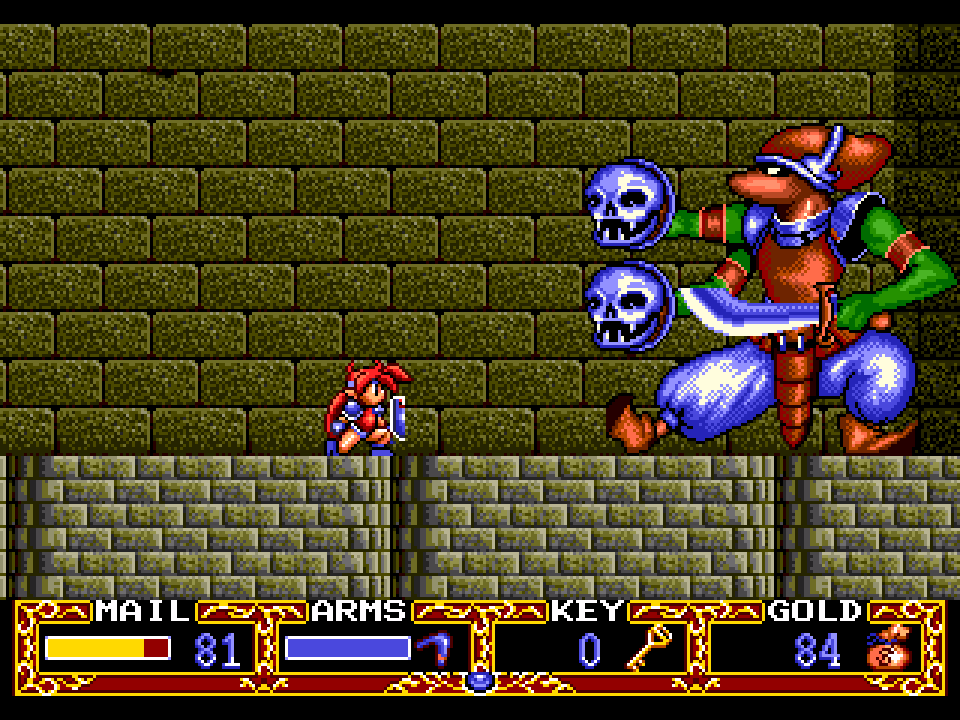
As Popful Mail was one of the earliest CD games to heavily feature in-game cutscenes full of voiced dialogue, you tended to see the same unskippable pre-boss fight banter many times over: thank the emulation gods that the app I used had a fast-forward button. I did also learn later that there had been fan patches to "un-Working Designs" these mechanical changes, if not the ancient memes, so I'll keep that in mind if I play any of their other localizations (for Sega CD, they also did both of Game Arts's Lunar RPGs and the more obscure Vay). For as hoary as some of the references are (and probably were at the time too), Popful Mail does have an amusing sense of humor that injects the game with both some necessary levity and a distinct personality, so I don't want it to sound like it was a frivolous and unwelcome stylistic choice. Without Popful Mail I don't think we'd have Zwei or Gurumin - both later Falcom RPGs that exhibit a similarly silly presentation, from their graphics to their dialogue - and having alternative protagonists to switch between means seeing these talking portrait cutscenes with three different types of "straight man" acting against the colorful foes and NPCs they encounter: Mail quickly falling back on violence and threats (she reminds me a lot of Estelle Bright, honestly); Tatto being an unfailingly polite doormat; and Gaw frequently targeting the fourth-wall with his sarcasm. This is best exemplified with the NPC Slick, an elf teenager that regularly gets himself and others in trouble through his own greed and stupidity; each party member treats him a little differently, though they all invariably detest the guy towards the game's end.
For as much difficulty as I had with this game - it took almost a week to complete, despite having a lean 8-10 hour "How Long to Beat" prediction - I'm glad I took the chance to fill another gap in my Falcom history and take on a rare Sega CD example of the genre even if I'm likely inviting more commentary on how there's been precious few RPGs so far in this supposedly RPG-focused feature. It's also given me plenty of appreciation for the hard work and strict standards of professionalism involved in modern game localization, though even after saying that in the passive-aggressive way I did I'm sure without Working Designs none of these games would've ever made their way out of Japan and the landscape for console RPGs in the west might've looked very different without these early dubbed experiments. I probably could've done with fewer characters calling each other the R-word and place names like "Gyp Ship" though, but hey. The early '90s, am I right?
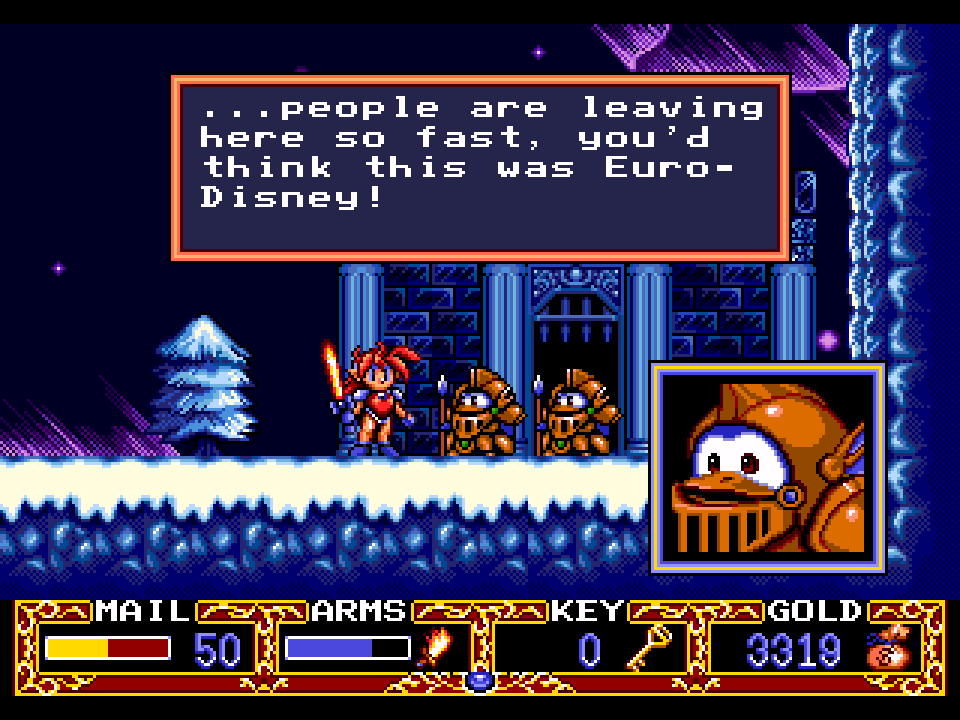
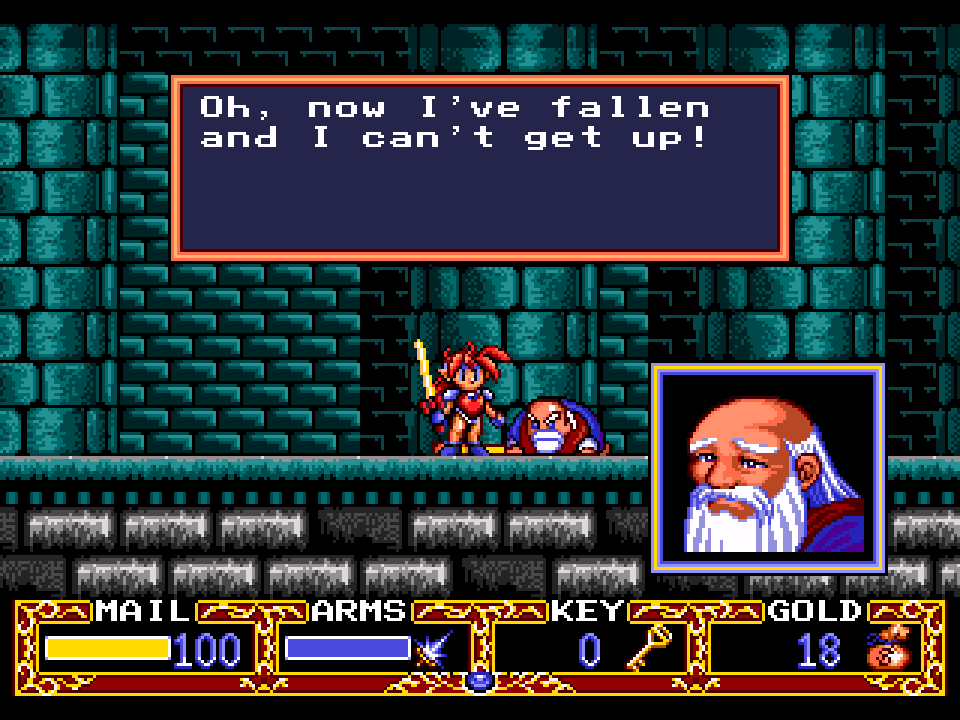
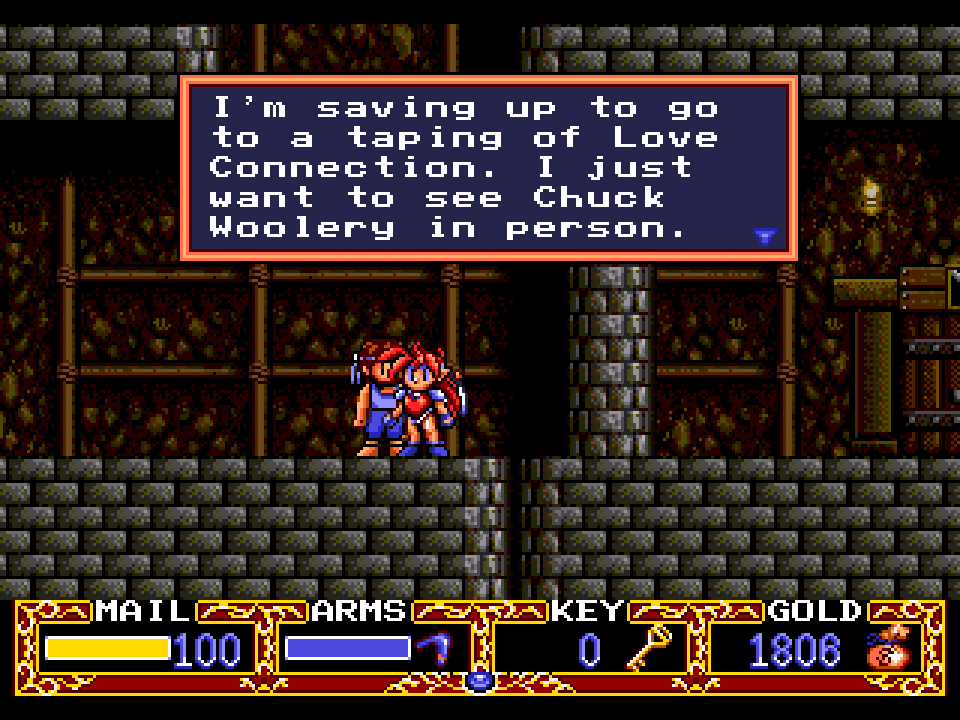
Rating: 3 Ristars out of 5.
Log in to comment